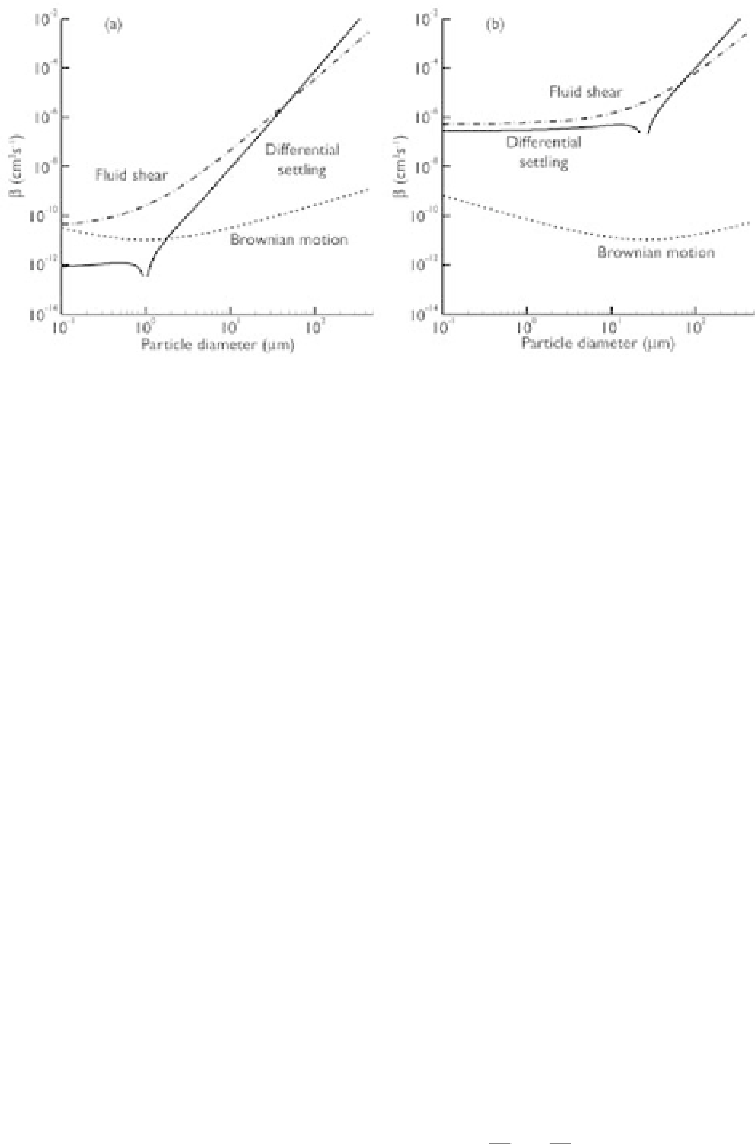Geoscience Reference
In-Depth Information
Figure 11.11
Collision function
β
versus particle size: (a) collision with a 1
µ
m particle and
(b) collision with a 25
µ
m particle (Tsai
et al
., 1987).
20
◦
C (293
◦
K),
G
200 s
−
1
differential settling. The conditions were
T
=
=
m
−
3
. As can be seen, the
Brownian motion is only important for collision of small particles, the differential set-
tling is the main cause for collision of large particles, and the fluid shear is important
for collision of medium particles.
The multiple-floc-size model was tested by Lick and Lick (1988) in simple cases, but
it encounters difficulties in quantification of
cm
−
2
),
m
−
3
, and
(2 dynes
·
ρ
=
2650 kg
·
ρ
f
=
1000 kg
·
s
α
ij
,
γ
ij
, and the size distribution of flocs
entrained from a cohesive bed.
11.3 SINGLE-FLOC-SIZE MODEL OF COHESIVE
SEDIMENT TRANSPORT
11.3.1 Governing equations
As described in the previous section, it is difficult to simulate the aggregation and diag-
gregation processes using the multiple-floc-size model in the present time. More often
used is the single-floc-size model, which does not resolve the details of aggregation
and disaggregation processes but considers flocculation in a lumped form through a
representative floc settling velocity
ω
sf
that varies with flow and sediment conditions
(Nicholson and O'Connor, 1986; Li
et al
., 1994; Chen
et al
., 1999; Le Normant,
2000; Wu and Wang, 2004c).
In the 3-D model, the sediment transport equation is
−
∂(ω
sf
c
)
∂
c
+
∂(
u
x
c
)
+
∂(
u
y
c
)
+
∂(
u
z
c
)
=
∂
∂
s
∂
c
+
∂
∂
s
∂
c
ε
ε
∂
t
∂
x
∂
y
∂
z
∂
z
x
∂
x
y
∂
y
+
∂
∂
s
∂
c
ε
(11.31)
z
∂
z


